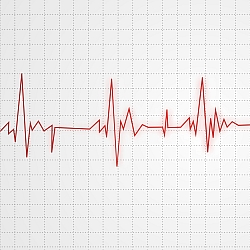The U.S. Food and Drug Administration has issued separate draft guidelines involving medical devices, one for designing better clinical trials, and the other for benefit-risk determinations. Both documents are open for public comment for 90 days. FDA’s guidance documents generally do not establish legal responsibilities, but instead describe FDA’s current thinking and recommendations.
The clinical trial guidance applies to studies for premarket submissions for developers of medical devices and FDA staff who review those submissions. The document offers design principles for medical device clinical studies used to meet premarket clinical data requirements.
The guidance outlines three stages for clinical development. Medical devices undergo an exploratory clinical stage, where the limitations and advantages of the medical device are evaluated. This stage includes first-in-human studies and feasibility studies.
The next stage, called the pivotal stage, develops the data needed to evaluate the safety and effectiveness of the device, and usually consists of one or more separate studies. Devices also undergo a postmarket stage which can include additional studies to better understand the device’s safety or long-term effectiveness.
The proposed guidance covers design issues related to pivotal clinical studies and does not address the other stages in any detail. A medical device pivotal study, according to FDA, is a definitive study where evidence is gathered to support the safety and effectiveness evaluation of the medical device for its intended use.
The text deals with design issues such as minimizing data bias and variability, setting appropriate study objectives, selecting the appropriate type of study, and choosing study sites and study participants. Evidence from one or more pivotal clinical studies is generally used to determine a reasonable assurance of safety and effectiveness of the medical device in a premarket approval application (PMA).
The proposed benefit-risk guidance also focuses on PMAs for high-risk medical devices, and according to FDA, aims to improve the predictability, consistency and transparency of the premarket review process for developers. The text applies to both diagnostic devices and therapeutic devices subject to PMA applications and, in some cases, devices subject to premarket notification (510(k)) requirements.
The document explains the factors that FDA considers when making benefit-risk determinations in premarket review of certain devices. In reviewing PMAs, FDA uses safety data to address risk, and the developer’s ability to mitigate that risk. FDA also uses effectiveness data to consider benefits, as well as other information, to determine if probable benefits outweigh the probable risks associated with the device.
FDA medical device reviewers may look at other factors such as the severity of the disease the product diagnoses or treats and whether or not alternative tests or treatments are available. Device reviewers also may consider whether the device is a new or unique technology, particularly if the device treats a disease with no other treatment.
The guidance also proposes that medical device reviewers use a worksheet to document their benefit-risk determinations. In certain cases, says FDA, this document could be made public after a device’s approval.
Read more:
- FDA Outlines Regulatory Science Needs for Drug Evaluations
- FDA Issues Draft Guidance on Mobile Medical Phone Apps
* * *


 RSS - Posts
RSS - Posts
You must be logged in to post a comment.